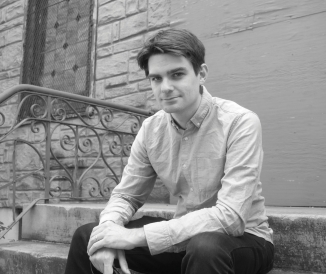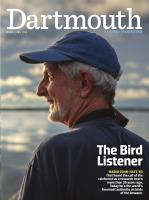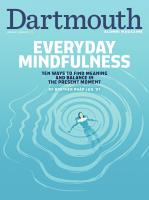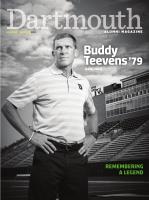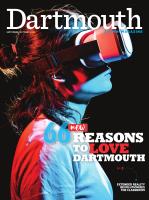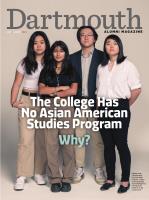
Mixed
Seeking to be Whole
By Shannon Joyce Prince ’09
Whenever I’ve been called on to define my heritage, I smile and say, “I am African-American, Cherokee (Aniyunwiya) Native American, Chinese (Cantonese) American and English American.” I excise nothing of myself. I claim the slave who was a mathematical genius; the storyteller, the quilt maker and the wise healer; the bilingual railroad laborer; and the farmer—regardless of the amount of melanin in any of their skins. I pay no attention to the pseudoscientific idea of blood quantum (the idea that race is a biological, measurable reality) and am uninterested in dividing myself into fractions, I am completely, concurrently and proudly all of my heritages.
From the time I was able to think about such things, I have considered myself both quadricultural and ana-racial (my personal neologism for “without race”). I am zero (raceless) and hoop (part of the peoples from all over the world). I think my parents might have been a little less comfortable in it, but I felt that four peoples had found space in my blood; thus, people of all bloods belonged in every space in general. I was comfortable at school not because I didn’t know who I was but because I did. And I knew who I was because I came from a strong family.
At my secondary school, melanin in an adult person’s skin most likely meant he or she was a menial laborer. In Hanover, melanin was a status symbol: It automatically meant you were an Ivy League student or a professor. Many nonwhite students felt uncomfortable in such a white space, even to the point of leaving the College. I was stunned by their reaction.
“I’ve never seen so much diversity in my life,” I would say. Although my hometown of Houston is an extremely diverse city, the parts of it in which I lived and moved were far whiter than Hanover and Dartmouth. With an Igbo professor and friends from Nepal and Albania, I felt as though I was on Disney’s “It’s a Small World” ride.
At Dartmouth I saw both how much I had and how much I had missed. As a Cherokee girl whose prep school education meant I spoke three European languages, I looked wistfully at a fellow student whose upbringing as a Diné on a reservation meant she was fluent in her people’s tongue. Who was the privileged one? Who was underprivileged? Her school hadn’t taught advanced math. No one in my family spoke Tsalagi. Both of us had mastered one world and sought to succeed in a second. Like many, maybe even all the nonwhite students at Dartmouth, we were seeking to be whole.
A senior fellow at Dartmouth, Prince is pursuing a joint J.D./Ph.D. in African and African American studies at Harvard.
Work in Progress
By Anise Vance ’11
I hate it when people refer to me as half black or half Iranian. I am not half of anything. Thanks to my father, I am fully black and, thanks to my mother, fully Iranian. My identity cannot be reduced to mere fractions. I have often joked with friends that being both black and Middle Eastern, I am America’s worst nightmare.
Growing up, I saw multiple cultural practices in my home every day. I saw them clash and create new norms, and I saw those norms turn into a culture in and of itself. I saw that nothing was stagnant or fixed. I saw that I had options and was eager to explore the identity choices I found laid before me.
Everyone navigates identity, but when race is introduced into the mix, the stakes are raised.
At an early age I learned how to twist my self-presentation to provoke specific responses from those around me. I was eager to figure out what identity I could drape around my shoulders most naturally. It was not the most fun or ho-hum moments that taught me which parts of myself to camouflage or accentuate—quite the opposite. To put it bluntly, I hated being followed around by store security and watching suburbanites cross the street when they saw me approaching.
I used my mixed identity to convey both positive and negative racial images. I love coffee shops, and grabbing a cup of “joe” is a daily ritual. If I want to get in and out without any hassles I wear a black hoodie, basketball sneakers and worn-out jeans. If I am open to conversing with older men sipping their lattes I wear slacks, a thin sweater and a trimmed beard. If I want to get some work done, I wear a T-shirt, my good jeans and a pair of Converse kicks. After I’ve worn a sweater in order to befriend latte-sipping regulars, when I walk in the next day wearing track pants and a Yankees cap, they often do not recognize me.
My freshman year at Dartmouth I made the mistake of thinking all liberal arts schools were bastions of liberalism. I dove headlong into a discussion with a 50-something academic, assuming he would appreciate different people’s perspectives and backgrounds. He soon started railing, however, about then-candidate Barack Obama and how he had to choose either his father’s blackness or his mother’s whiteness. I am still unclear about the “why” of it all, but I clearly recall the last few moments of our conversation.
Him: “I can tell you’re just going to dismiss what I’m saying because I’m an old white guy.”
Me: “No, I’m going to dismiss it because you just don’t get it.”
A senior fellow at Dartmouth, Vance is pursuing an M.F.A. in creative writing at Rutgers.
Good Hair
By Ana Sofia De Brito ’12
As a Cape Verdean in America I often feel I am forced to choose between black and white and “other.” I prefer to choose other because I’m neither black nor white, but being in between creates problem for others trying to classify me. Here in the United States I identify as black, which is the more comfortable category to fit myself into, but I feel like an immigrant stepchild to black American culture.
To make up for the lack of recognition by my fellow black people I tend to adopt my friends’ accents and mannerisms and try to appear “more black.” I’ve become a great actress in the role of black American. My accent changes from Southern to Midwestern to New Yorker, depending on where the person I’m talking to is from. I’ve learned to talk about black hair and leave my hair curly to keep from looking “too white.” I stay out in the summer sun as much as possible in order to get a deep tan and appear “more black.” I take classes in African and African-American studies, where I often feel that comments from lighter-skinned and African students are delegitimized because we have not gone through the same experiences as the African-American students. Once again there is the divide between Us and Them.
At Dartmouth I think I won over most of the student body: I was seen as black, though some people were still surprised when I announced I was in the NAACP or part of the Afro-American Association. I sometimes wished I didn’t have to mount a campaign to win people over to the identity I have chosen, that I could just be Cape Verdean and be seen as what I am instead of trying to fit into a single category of being black.
Regrettably, my family’s ideas about racial identity are less evolved than mine. I don’t think they are racist in terms of color, but they are against what they see as the black mentality, based on stereotypes perpetuated by the media and the poverty-stricken environment so many blacks live in. My father doesn’t want me to associate with black Americans, whom he views as lazy, stupid welfare users. He’s always surprised when I bring home black boyfriends who are educated, but they are never good enough for him: “He’s pretty educated…for a black boy.” My family and I constantly fight over the way they address black Americans, but it’s hard to change their way of thinking when they continue to see the effects of poverty on the black population. This makes it difficult for me to explain to them how their words affect me: It’s hard to live in a world where fighting for what you want to be seen as is not supported by your family members.
A Latin American, Latino and Caribbean studies major, De Brito is completing a post-baccalaureate year in premed sciences at the University of Vermont.
One Plus One Equals Three
By Yuki Kondo-Shah ’07
People always have labels for others, neat little imaginary stickers that they attach to people’s foreheads to make it easier to understand where they fit in the world: black, white, Asian, Hispanic, old, young, rich, poor, immigrant, American, foreigner. It’s an easy task when individuals appear to fit into those neat categories, like items scanned at a supermarket, but it doesn’t work with multiracial people. You can scan and then rescan, but it’s hard to come up with an appropriate label. The curious few may ask, “Where are you from?” or “What are you?” But what if the labels people stick on you don’t fit your self-identity?
I’ve worn lots of labels in my life. Some with pride, some with discomfort, some unknowingly. I was born in America but lived in Japan until I was 7, when we moved to Arizona. When I was 18 I traded in my T-shirts and shorts for puffy down jackets and long underwear to attend Dartmouth. Up to that time I’d been labeled ha-fu, the term for mixed race people in Japan, and gaijin, which means “foreigner” in Japanese—also “new immigrant,” “Asian,” “biracial,” “Asian American.”
I wanted a college that made diversity a priority, where I could find role models and mentors. During my search I was in touch with the dean of Asian American students and was delighted to receive an email from one of the student Asian American organizations. Once I arrived on campus, however, I changed my mind about participating in this organization, as I felt that joining it would put me in a narrow category.
Given my Bangladeshi father and Japanese mother, I felt that the numerous Asian American organizations didn’t offer a community in which I could participate because they were country-specific. I felt that the East Asian students would doubt my authenticity if I showed up at one of the meetings because I didn’t look fully Japanese. Because my dad hadn’t taught me about South Asian culture, I was afraid of being called out as fake or a poser if I tried to associate with the South Asians.
As a prospective student I had admired the diversity of student organizations and felt it was wonderful that so many diversity clubs and organizations existed at the College, but at the end of the day as a biracial Asian American I couldn’t find a space where I fit in and felt at home.
A double major in government and Asian and Middle Eastern studies, Kondo-Shah works as a public diplomacy officer at the U.S. embassy in Bolivia.
Essays excerpted with permission from Mixed: Multiracial College Students Tell Their Life Stories, edited by Andrew Garrod, Robert Kilkenny and Christina Gomez (Cornell University, 2013). Garrod is a professor emeritus of education.


